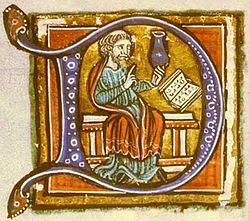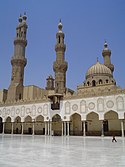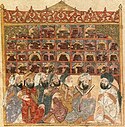Ivan Bilibin 182
Иван Билибин. «Двор мечети Ал-Азар и университетский комплекс Каира»
Courtyard of the Al-Azhar Mosque and University, Cairo, signed, also signed with initials and dated 1928, also further signed and inscribed "23 Bd Pasteur, Paris, XV" on the reverse. Pencil, watercolour and gouache on cardboard, 54.5 by 76 cm.
100,000-150,000 GBP
Provenance: Important private collection, Germany.
Authenticity of the work has been confirmed by the expert V. Petrov.
Ivan Yakovlevich Bilibine was a brilliant draughtsman with a unique style. His instantly-recognisable virtuoso technique, comprising areas of soft watercolour bounded by an elegant line, had already assured him acclaim as a true aesthete during his lifetime. The Bilibine style was born. The artist had many disciples and imitators including two who were quite well-known, Zvorykin and Matorin; yet despite their undoubted talent they only ever managed to mimic the exterior, surface qualities of the master’s work.
In fact, Ivan Bilibine remained the unsurpassed innovator of Russian graphic art in the Silver Age, and his illustrations of Russian folk tales and epics are a superlative exemplar of the graphic art of their time. Courtyard of the Al-Azhar Mosque and University, Cairo is not just an everyday oriental scene based on the fruits of his travels in the South. The accuracy with which he conveys the nuances of atmosphere and colour in Cairo, the specifics of architectural detail and the soft afternoon light, as well as the freshness of the composition, all combine to place this work within a group of unique, museum-quality works by this outstanding Russian artist.Relevantní obrázky
Relevantní články
Islámský zlatý věkIslámský zlatý věk je označení vztahující se na historické období islámu, které se datovalo od 8. století po 13. století, kdy byla velká část islámského světa ovládána různými chalífáty a zažívala vědecký, ekonomický a kulturní rozkvět. Toto období je tradičně chápáno tak, že začalo během panování abbásovského chalífy Hárúna ar-Rašída (786–809) spolu s otevřením Domu moudrosti v Bagdádu, kde sídlili učenci z různých částí světa, kteří měli různé kulturní zázemí a mandát shromažďovat a překládat veškeré světové klasické poznatky do arabštiny. Obecně toto období skončilo kolapsem abbásovského chalífátu společně s mongolskou invazí a obležením Bagdádu roku 1258, třebaže několik současných učenců má za konec islámského zlatého věku dobu okolo 15. až 16. století. .. pokračovat ve čtení







